Have you ever wondered if you could connect your acoustic piano to a computer and control virtual instruments?
Converting an acoustic piano into a MIDI controller makes this possible, opening up new creative possibilities.
Let’s dive in to learn the how and why…
Can An Acoustic Piano Be Turned Into Midi Controller?
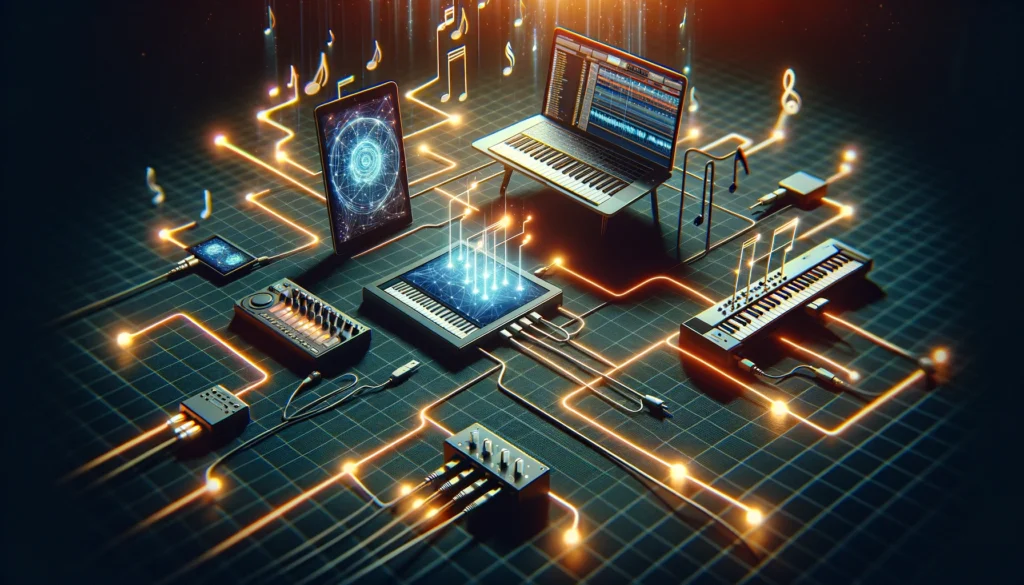
Yes, with the right MIDI conversion devices, acoustic pianos can be adapted into MIDI controllers.
Components like optical sensors or specialty switches interface with keyboard actions, detecting notes played to output corresponding MIDI data.
We’ll explore required gear and steps in more detail below.
What is MIDI and Why Convert Your Piano
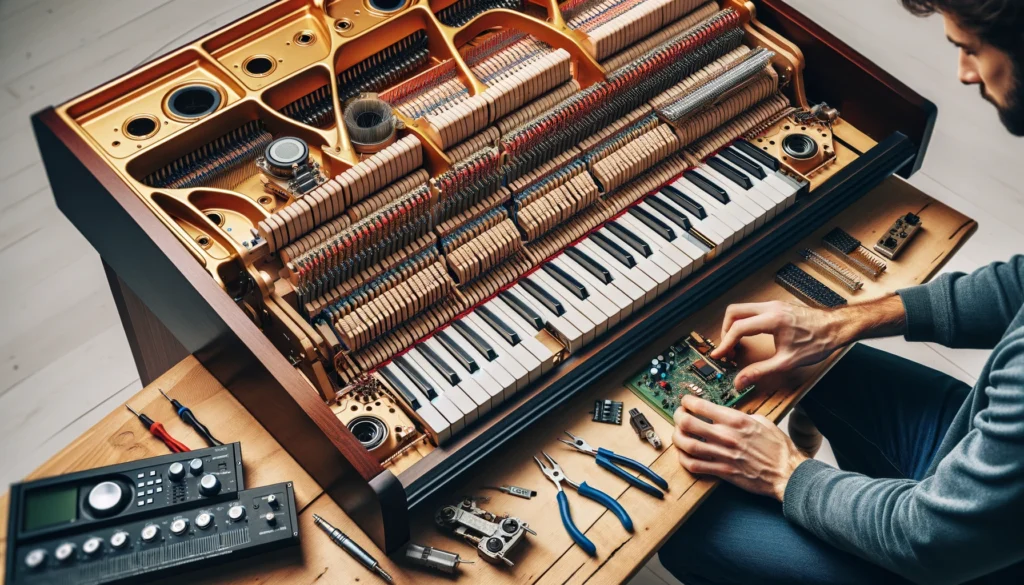
Musical Instrument Digital Interface, more commonly referred to by its acronym MIDI, is a technical standard protocol that enables various electronic musical instruments, computers, smartphones, and other hardware to connect with each other and exchange musical performance data.
Using MIDI connections and messages, electronic devices can communicate information on musical notes, tempos, rhythms, velocities and various other expressive details that allow them to drive one another and work together to create and perform musical compositions.
Converting an acoustic piano into a MIDI generating controller opens up many new possibilities for the instrument.
The main benefits are gaining the ability to fully capture and record the nuances of your piano playing performances into MIDI musical data, as well as route the MIDI information to music production software and external sound modules.
This allows you to utilize the playing dynamics and expressions from your acoustic piano while triggering an exponentially wide array of virtual instrument sounds and recording options.
How Acoustic Pianos Can Output MIDI

On their own, unmodified acoustic pianos do not have any capacity to output the digital signals of the MIDI protocol.
Unlike electronic keyboard instruments and digital pianos, acoustic pianos are entirely mechanical in nature.
When keys are pressed, felted hammers within the action mechanism strike metal strings to produce vibrating pitches.
There are no integrated electronic sensors or MIDI data generation components.
In order to gain a MIDI output from an acoustic piano, an electromechanical device needs to be added to detect key presses.
There are a few common options for suitable MIDI conversion units to consider installing:
Specialized MIDI controller conversion kits can be purchased to retrofit and customize to your specific acoustic piano make and model.
These kits typically involve mounting optical sensors or specialized mechanical switches to the keys and/or hammers of the piano.
This allows note event triggers to be read and converted into MIDI signals.
Alternatively, some universal optical sensor bars are available which can generally be affixed above or below the keyboard of most pianos.
These read the movements of the keys and generate MIDI while avoiding making permanent changes specific to the piano mechanics themselves.
There are also products called MIDI capture keyboards that involve laying a membrane pressure sensor mechanism across the keys of your acoustic piano.
The sensors detect pressure changes when notes are played to convert the information into MIDI data accordingly.
Installation Steps
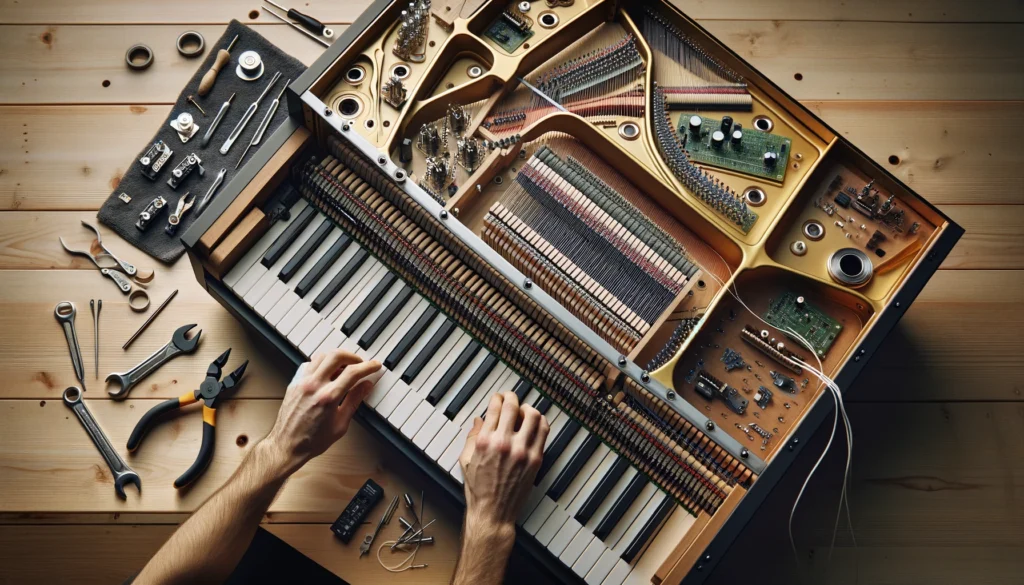
To install components for converting an acoustic piano into a MIDI controller there are some key steps to follow:
First, completely remove the outer casing surrounding the inner piano action mechanics, exposing full access above and below the keyboard.
Depending on your specific piano model, this may require unscrewing or prying off the fallboard above the keys, bottom panel underneath, front keyslip, and possibly cheek blocks from the sides.
Reserve all hardware and casing components for later reassembly.
With the action mechanics in view, the mounting or attachment process can begin for whichever MIDI conversion unit option was selected.
Carefully follow the instructions provided for affixing or otherwise tracking the sensors/switches to properly interface with piano key movements.
Some units mount via screws or special putty adhesives to static portions of the piano frame, while others may attach directly to moving components like keys or hammers.
Proper placement is critical for accurate tracking.
The conversion unit will have a MIDI out port, likely USB or a 5-pin DIN connection.
Run a cable from this port to an audio interface, computer, or another MIDI routing device.
Secure the cable neatly out of the way within the piano case to prevent snagging moving parts.
With hardware physically installed, install drivers as needed for your conversion system and any related software for editing settings like MIDI channel assignments or velocity curves.
Some units offer more custom tuning options than others depending on the complexity of the product.
Using New MIDI Piano Controller
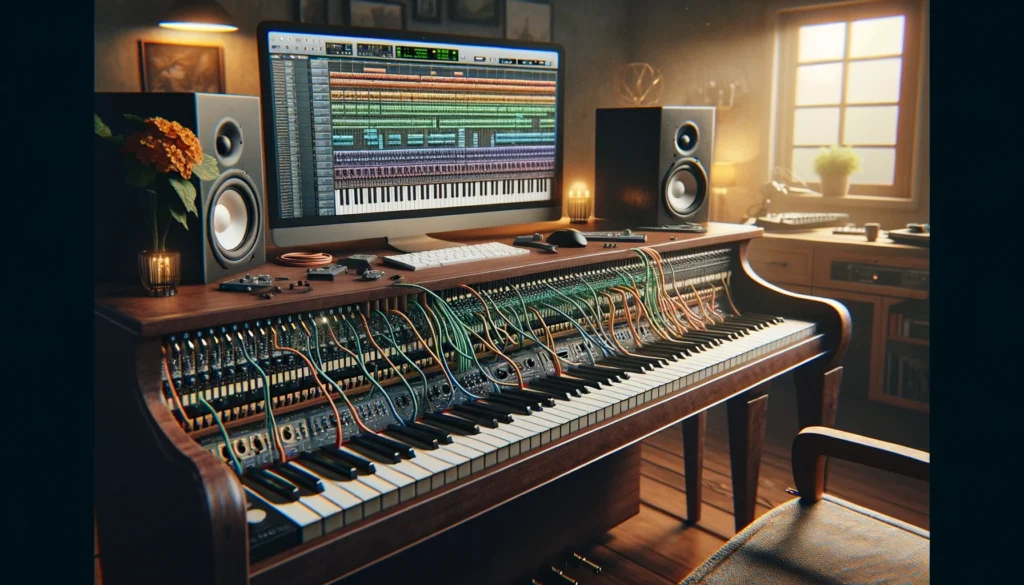
Upon completing the installation steps outlined for integrating a MIDI conversion device into an acoustic piano, there will be some calibration and adjustments required before the new controller will properly interact with software.
To begin, open digital audio workstation (DAW) software or another program for receiving MIDI note input, and activate a software instrument track so you can hear sound when notes are triggered.
Slowly play some notes on different areas of the piano keyboard and listen for accurate sound reproduction without mis-triggers or drops.
There may be some trouble keys not triggering properly or notes sustaining too long.
Refer to your conversion device instructions for tweaking onboard settings like MIDI channel matching, note off reporting, and velocity sensitivity curves until playability feels seamless.
Physically adjust the placement or angles of conversion unit components if needed to improve tracking consistency.
Once accurately calibrated, the breadth of options are wide open for utilizing your acoustic piano as a MIDI controller keyboard.
Try recording MIDI sequences to loop back or even recording live audio by playing your software instruments.
The nuances of playing technique from the real piano action translates beautifully into precise MIDI expression data.
Explore loading different virtual instrument plugins for everything from realistic piano and keyboards to strings, guitars, synthesizers and more, now playable from your acoustic piano converted into a versatile MIDI controller keyboard.
Considerations and Limitations
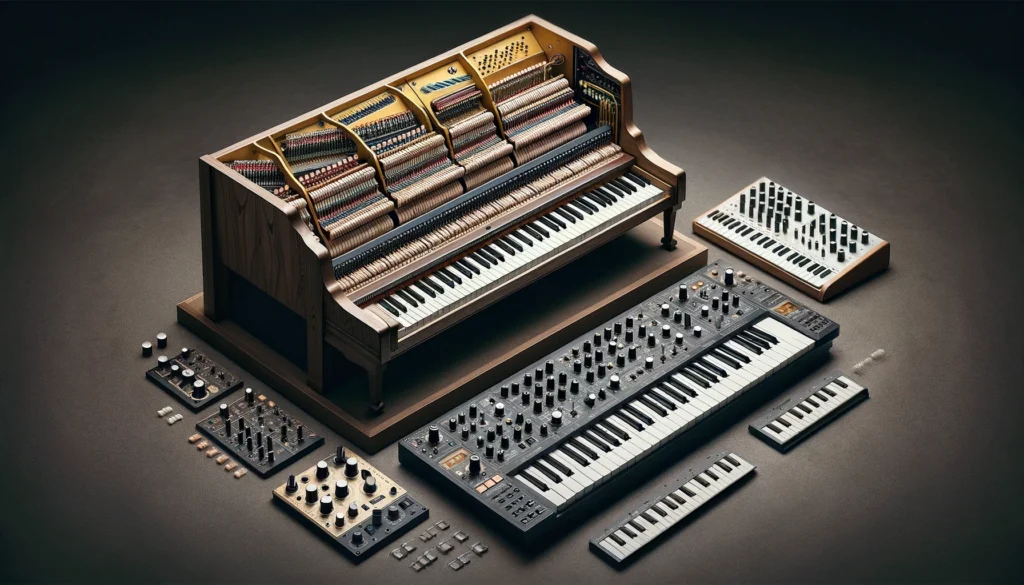
While adding MIDI connectivity greatly expands the functionality of your acoustic piano, there are some limitations and compromises to note relative to having a proper and dedicated MIDI keyboard controller.
Conversion systems introduce some degree of latency delay between playing keys and hearing virtual MIDI instruments respond.
Higher quality name brand conversion units minimize processing times, but latency still generally exceeds that of actual MIDI keyboards for live playing.
Track recording is not impacted.
The piano is also still limited to its original fixed range of 88, fewer, or possibly more keys.
Large MIDI controllers aimed at controlling virtual instruments often span 3, 4, or more octaves since they are not bound by tangible string ranges.
So playable note ranges remain unchanged post-conversion.
And lastly, permanently modifying pianos, especially high-quality instruments with complex actions risks compromising delicate adjustments.
Professional installation assistance would be advisable for owners of premium grand pianos.
Less precise upright pianos generally tolerate conversion component additions better.
Just use care when making any adjustments and wiring installations inside your acoustic piano.
Conclusion
Converting an acoustic piano into a MIDI controller requires careful installation of electromechanical conversion units, but enables the piano to interface with music software and external sounds.
With some limitations to consider, this modification unlocks greater creative flexibility.
